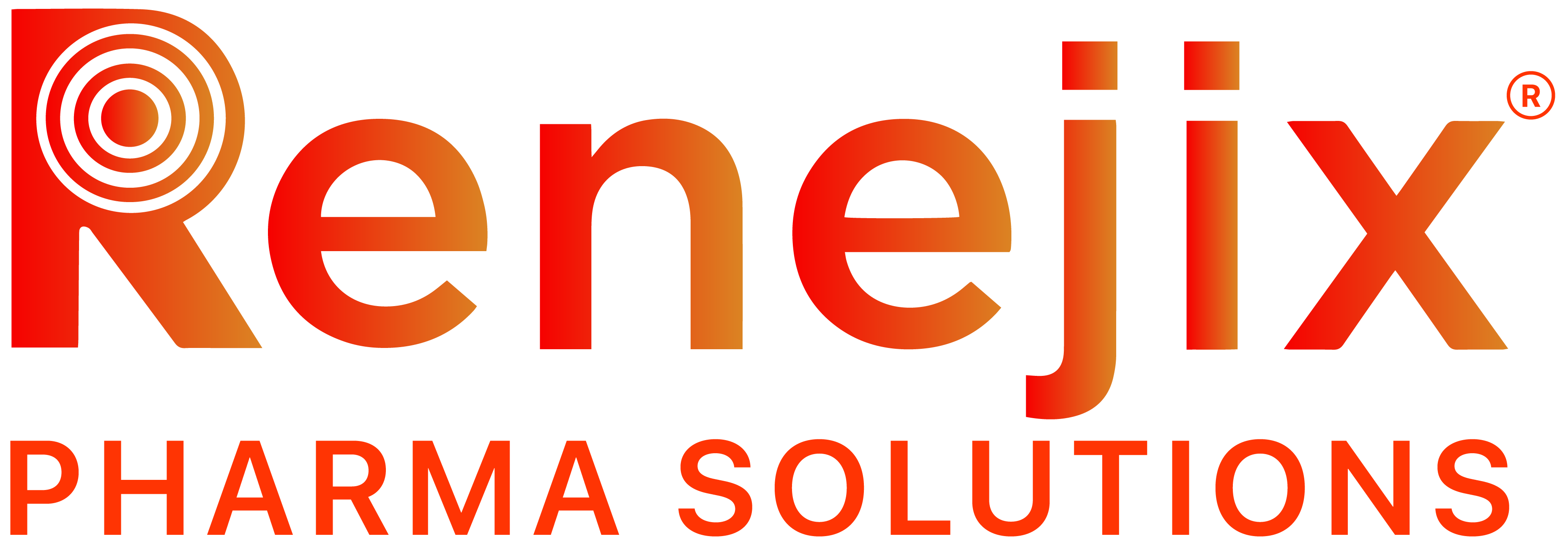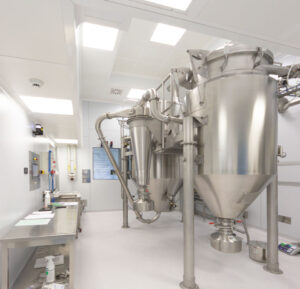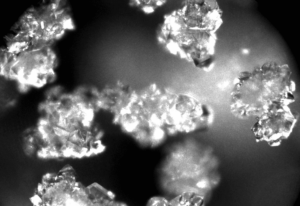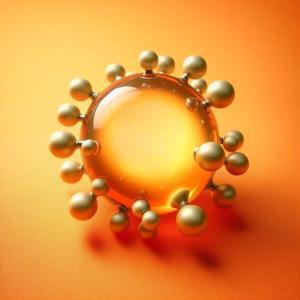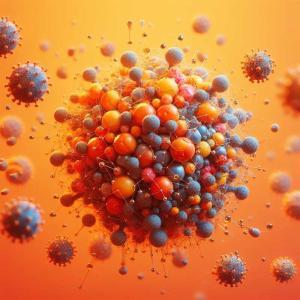Bioavailability Enhancement Technologies
Bioavailability enhancement refers to the process of increasing the rate and extent to which an active pharmaceutical ingredient (API) is absorbed from a dosage form and becomes available at the site of action. This is crucial for achieving optimal therapeutic effects, especially for drugs with poor solubility or permeability.
Bioavailability enhancement is not just about improving drug absorption; it’s also about patient compliance and safety. Drugs with enhanced bioavailability can be administered in lower doses, reducing the risk of side effects and making the medication more tolerable for patients.
We have multiple R&D teams with development and formulation expertise to help solve some of the most complex bioavailability enhancement challenges. With over 30+ years of experience and multiple, proven and innovative formulation technologies to help you deliver more effective treatments that can improve the performance of your product. Renejix can help overcome complex bioavailability enhancement challenges and accelerate drug development process through a wide variety of superior formulation technologies, process technologies, and rigorous data-driven scientific approaches.
Benefits of Bioavailability Enhancement
- Optimal Drug Absorption: For a drug to exert its pharmacological effect, it must be absorbed into the bloodstream. Bioavailability enhancement ensures that the maximum amount of the active drug reaches systemic circulation. This involves the use of advanced formulation techniques, such as nano-carriers and solid dispersions, to improve the solubility and permeability of poorly soluble drugs, thereby facilitating their absorption through the gastrointestinal tract.
- Therapeutic Efficacy: The primary goal of any drug is to achieve the desired therapeutic effect. Enhancing bioavailability is essential for drugs with poor solubility or permeability, as it allows for the drug to reach the target site in the body more effectively. This can be achieved through various methods, including the use of prodrugs, which are chemically modified versions of the active drug that can improve its absorption and then convert into the active form within the body.
- Reduced Dosage Requirements: Drugs with enhanced bioavailability can often be administered in lower doses while maintaining efficacy. This can lead to a reduction in drug-related side effects and improved patient compliance, as lower doses reduce the risk of adverse reactions. Techniques such as lipid-based formulations and co-crystals are used to enhance bioavailability, allowing for a more efficient therapeutic effect with a smaller amount of the drug.
- Cost Effectiveness: By improving the bioavailability of drugs, pharmaceutical companies can reduce the amount of active ingredient required per dose, which can lead to significant cost savings in the long run. This not only reduces the cost of raw materials but also decreases manufacturing expenses and wastage. The development of more efficient drug delivery systems, such as transdermal patches and oral disintegrating tablets, can further enhance bioavailability and reduce overall treatment costs.
- Overcoming Drug Development Challenges: Many new chemical entities (NCEs) exhibit poor solubility and bioavailability, which can hinder their development. Bioavailability enhancement techniques can address these issues, increasing the likelihood of successful drug development. Advanced technologies, such as amorphous solid dispersions and self-emulsifying drug delivery systems, are employed to improve the bioavailability of NCEs, enabling their progression through clinical trials and into the market.
- Patient Compliance and Convenience: Medications that are more bioavailable are often easier to administer and may require less frequent dosing. This can significantly improve patient adherence to treatment regimens, as simpler and more convenient dosing schedules are more likely to be followed. Innovations such as sustained-release formulations and orally disintegrating tablets help achieve higher bioavailability while enhancing patient convenience and compliance.
- Addressing First-Pass Metabolism: Some drugs are extensively metabolized in the liver before reaching systemic circulation. Bioavailability enhancement can help bypass or reduce first-pass metabolism, ensuring that enough of the drug remains active. Strategies such as the use of enzyme inhibitors, liposomal encapsulation, and alternative routes of administration (e.g., sublingual or transdermal) can effectively mitigate the impact of first-pass metabolism on drug bioavailability.
- Stability and Shelf Life: Enhancing bioavailability can also improve the stability of drugs, which can extend their shelf life and ensure that patients receive medication that maintains its potency over time. Formulation approaches such as the use of protective coatings, antioxidants, and stabilizing excipients can enhance both the bioavailability and stability of drugs, ensuring their effectiveness throughout their shelf life.
Advanced Methodologies for Bioavailability Enhancement
- Crystal Engineering: This advanced technique involves meticulous modification of the crystal form of a drug substance. By altering the crystal structure, we can significantly enhance the drug’s solubility and dissolution rate. Crystal engineering allows us to create different polymorphic forms of the drug, each with unique physical and chemical properties that can improve bioavailability.
- Micronization: By reducing the particle size of a drug to the micron scale, we dramatically increase its surface area, which directly correlates with a higher dissolution rate. This process involves the use of high-energy mills and specialized grinding techniques to achieve particles in the range of 1 to 10 micrometers, facilitating faster absorption into the bloodstream.
- Solid Dispersions: This method involves dispersing the active pharmaceutical ingredient (API) within a solid matrix, typically composed of polymers or other excipients. The resultant dispersion enhances the solubility and bioavailability of the drug by maintaining the API in an amorphous state, which is more soluble than its crystalline counterpart.
- Nanosizing: This process involves reducing drug particles to the nanometer scale, usually below 100 nanometers. Nanosized particles exhibit unique properties such as increased surface area and altered pharmacokinetics, leading to improved absorption and bioavailability. Techniques such as high-pressure homogenization and wet milling are employed to achieve these ultra-fine particles.
- Cyclodextrins: These cyclic oligosaccharides are employed to form inclusion complexes with drug molecules, effectively encapsulating them. This complexation enhances the solubility, stability, and bioavailability of the drug. Cyclodextrins can shield the drug from degradation and improve its release profile.
- Solid Lipid Nanoparticles (SLNs): SLNs are submicron colloidal carriers composed of biocompatible and biodegradable lipids. These carriers can encapsulate poorly soluble drugs, significantly improving their bioavailability. SLNs offer controlled release profiles and protect the drug from enzymatic degradation, enhancing its therapeutic efficacy.
- Colloidal Drug Delivery Systems: These systems, including micelles, liposomes, and nanoemulsions, are designed to increase the solubility and bioavailability of drugs. By encapsulating the drug in a colloidal carrier, these systems can enhance the drug’s stability, protect it from degradation, and improve its absorption through biological membranes.
FAQs
Here are some frequently asked questions about Bioavalibility Enhancement
Bioavailability refers to the proportion of a drug that enters the systemic circulation when introduced into the body and is therefore available for action. Enhancing bioavailability is crucial for drugs with poor solubility or permeability, as it can significantly increase their effectiveness, reduce dosage requirements, and improve patient compliance by minimizing side effects associated with higher doses.
We employ various methods to enhance bioavailability, including:
- Solubility enhancement: Techniques like nanoparticle formation, solid dispersions, and salt formation to increase the solubility of poorly water-soluble drugs.
- Permeability enhancement: Using permeation enhancers or employing lipid-based delivery systems to facilitate drug absorption across biological membranes.
- Particle size reduction: Techniques such as micronization and nanonization to increase the surface area for dissolution.
- Formulation with bioenhancers: Incorporating substances that can enhance the drug's bioavailability by various mechanisms, including inhibition of metabolism or improving permeability.
Selecting the right bioavailability enhancement technique involves a comprehensive evaluation of the drug's physicochemical properties, its pharmacokinetic profile, the targeted site of action, and the desired release profile. Additionally, considerations such as the impact on manufacturing processes, regulatory guidelines, and cost-effectiveness play crucial roles in the decision-making process.
Bioavailability enhancement can impact the drug's safety profile, primarily by increasing the concentration of the drug that reaches systemic circulation. While this is often beneficial, it necessitates careful optimization and testing to ensure that increased levels do not lead to toxicity or adverse side effects. Rigorous pharmacokinetic and safety studies are essential to ascertain the optimal therapeutic window.
Challenges in bioavailability enhancement include:
- Complex formulation processes: Techniques such as nanoparticle formation or solid dispersions can be complex and require specialized equipment and expertise.
- Regulatory hurdles: Ensuring that enhanced bioavailability formulations meet all regulatory requirements for safety and efficacy.
- Stability issues: Some bioavailability enhancement techniques can affect the physical or chemical stability of the drug.
- Cost considerations: Advanced formulation and processing techniques can increase the cost of drug development and manufacturing.
Particle size reduction enhances bioavailability by increasing the surface area available for dissolution, thereby facilitating faster and more complete absorption of the drug into the bloodstream. Techniques like micronization and nanonization are commonly used to achieve finer particle sizes, improving the solubility and dissolution rate of poorly soluble drugs.
Taste masking can be applied to most oral dosage forms, including tablets, capsules, liquids, and chewables. However, the suitability and approach to taste masking may vary depending on the dosage form's characteristics and the intended release mechanism (e.g., immediate release versus sustained release).
Bioavailability enhancement techniques can be applied to a wide range of drug forms, including tablets, capsules, liquids, and transdermals. However, the suitability and specific approach may vary depending on the drug's properties, the intended route of administration, and the target patient population. Some techniques may be more appropriate for solid oral forms, while others may be better suited to liquid formulations.
Regulatory authorities view bioavailability enhancement as a critical aspect of drug formulation that can significantly impact drug efficacy and safety. They require comprehensive data demonstrating that the enhancement technique improves bioavailability without compromising the drug's safety profile. Regulatory submissions must include detailed information on the formulation, manufacturing processes, and results from bioavailability and pharmacokinetic studies.
The latest advancements in bioavailability enhancement technologies include:
- Nanotechnology: Utilizing nanoparticles, nanocrystals, and nanoemulsions to improve solubility and permeability.
- Supercritical fluid technology: Using supercritical fluids to produce particles with enhanced solubility
